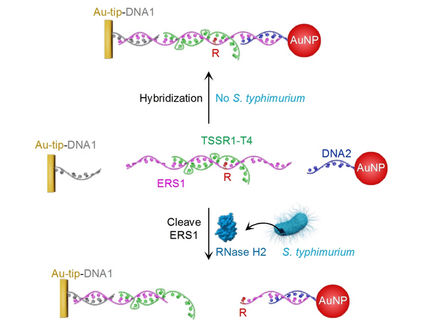Spices and herbs: Ingredients which may pose a health risk
Advertisement
spices and herbs can be naturally or intentionally contaminated with carcinogenic pathogens or foreign matter. The latter, such as certain unauthorised colorants, are often added deliberately. The EU SPICED project was initiated in 2013 to further increase the safety of the supply chains in Europe. To mark the end of the project, the international symposium "Spices and Herbs - A Risk-Free Taste Experience?" was held at the Federal Institute for Risk Assessment (BfR) on 1 and 2 June 2016. The BfR is coordinating the research project, which is promoted with funding from the 7th EU framework programme. "In the SPICED project, we cooperated successfully with partners from seven European countries," says BfR President Prof. Dr. Dr. Andreas Hensel. "Our focus at the BfR was on developing new analysis methods for the detection of contaminants in herbs and spices and improving existing ones. By doing so, we laid an important foundation for reducing possible health risks for consumers".

diapicard, pixabay.com, CC0
The European Union (EU) is one of the world’s largest markets for herbs and spices, most of which are imported as dried raw materials from regions outside the EU. Contamination can occur at numerous points in the production and supply chain and possibly pose a health hazard to consumers. Although herbs and spices are only used in very small quantities, they are added to a great many foods. In the course of the SPICED project, research was done on the production and trading chains of herbs and spices in six work packages in order to identify possible weak points for the entry of contaminants and acquire new findings on consumer behaviour.
The contamination of herbs and spices e.g. through microorganisms can have far-reaching consequences, as one single batch of a product can be used in numerous follow-on products in the food chain and reach many consumers when foods are subsequently prepared at home. In addition to this, several microorganisms - above all sporogenic bacteria - can even survive for weeks or months in dried herbs and spices. For this reason, special focus was placed in the SPICED project on the reliable and standardised analysis of biological contamination in herbs and spices. When optimising the detection methods for various microorganisms, such as the sporogenic Bacillus cereus or Salmonella, the antimicrobial properties of the various products were also taken into account.
Spices and dried herbs are often falsified in international trade. This can have negative effects on consumer health, depending on the type of falsification. In the past, for example, several producers have added illegal and potentially health-damaging colorants to poor quality paprika and curry spice. The scientists in the SPICED project have developed spectrometric and spectroscopic analysis methods for detecting various falsifications of herbs and spices in so-called authenticity tests.
Analysis of the entire supply chain, from the producer through processing, trade, transport etc. to the consumer, helped to identify weak points at which microbial or chemical contamination could be introduced. This knowledge helps to optimise prevention measures. In addition to this, various reporting, warning and monitoring systems were tested and suggestions prepared in order to prevent potential health damage to the consumer through contaminated herbs and spices, and maintain the ability to react quickly in the event of a hazard.
It is often difficult to identify herbs and spices as the cause of a foodborne infection or poisoning as consumers, researchers, physicians and authorities concentrate primarily on the main food ingredients when looking for the reasons. One goal of the project is therefore to sharpen awareness for the possible health risks posed by contaminated herbs and spices. For this reason, the SPICED project was presented at a consumer fair in Hungary and at the Long Night of the Sciences in Austria. The BfR and its project partners have also developed a travelling exhibition on the subject, which is presented in so-called Science Centers, especially for the target group families with children.
The long-term objective is to continue the research activities and collaboration within the network that was built up during the project. Furthermore, the research results of the SPICED project were and will continue to be published in international trade journals and a special issue of the scientific journal “Food Control”.


























































